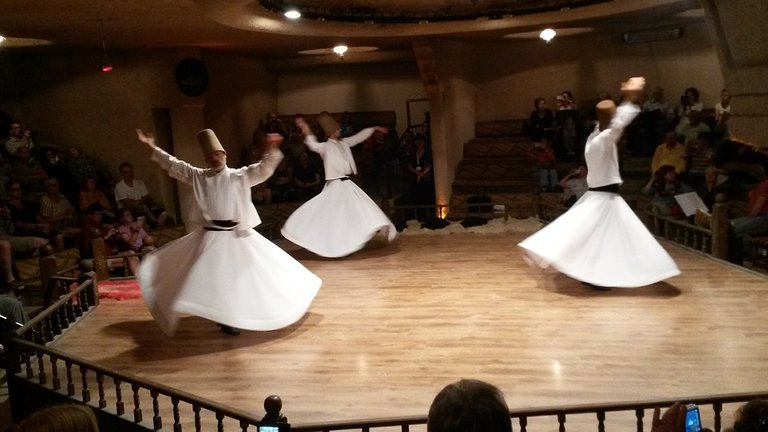
The dervishes spinning in the whirlwind of ritual dance symbolize a mystical religious service and an ecstatic union with God. Despite the prohibition of the ritual "sama", which has been in effect for many years, it is still preserved and can give some idea of the Sufi mystical rites created in the 13th century by Jalaleddin Rumi.
Nowadays, dancing or spinning dervishes are an integral part of Turkic culture, heirs of the religious trend that originated in ancient Iran. The word "dervish" came from Persian means "beggar", "poor man". So called the wandering members of the Sufi orders. The mystical current grew on the basis of Sufism, one of the branches of Islam, it professes direct knowledge of God as an individual and merges with it.
In the city of Konia (at that time the capital of the Koni Sultanate, the state of the Seljuk Turks), the Persian poet and mystic Jalaleddin Rumi (1207-1273), also known as Mawlawi, founded the Mawlawiyt order — the whirling dervishes, one of the Sufi orders. Members of the Order sought to mystical union with God through music, dance and a state of ecstasy. Dervishes wore woolen clothes, standing out sharply against the background of the sophistication and luxury of the Sultan's court.
Memory Mysticism
The ministry of the dervishes is based on the idea of a divine forerunner in the soul, which must find an outlet, only then can man achieve perfection. The help of a mentor who is versed in all the subtleties of the ritual "sama" (which means "listening to music"), which is a dance, is necessary.
To the sound of the music, the dervishes, dressed in black, in characteristic conical headdress made of felt, make three circles at a fast pace. Then they discard black robes and remain in a white dress. Again there are three circles in the dance: the right hand is stretched out to the skies, the left hand is lowered to the ground. On the last lap they are joined by a mentor, he is spinning on the line dividing the circle formed by the dervishes. The purpose of the dance is to prepare the spirit of man for the perception of the divine.

The ritual "sama" includes three stages. The first stage means blindness of consciousness. The second music serves as a way to transform feelings. At the last stage, the soul is purified. White clothes under black cloaks symbolize the freedom of the dervish from his corporal shell and readiness for the second birth.
The whirling of dervishes is a symbol of the rotation of planets. The position of the mentor means the illusory nature of the environment: he remains in the center as the embodiment of God — a real being, to which every person who has attained perfection is like. Great importance is attached to the position of the hands: the right accepts God's grace, the left hand over to the world. It is a symbol of the transfer of knowledge from the teacher to the disciple. The renewed man personifies the union of the divine and the earthly.
Good post.. upvoted... i am into art and photograph I posted my art work and see your post as well..plz do check on my post for ya support . Thx .. I followed U now..
Peace, Abundance, and Liberty Network (PALnet) Discord Channel. It's a completely public and open space to all members of the Steemit community who voluntarily choose to be there.Congratulations! This post has been upvoted from the communal account, @minnowsupport, by Mamasetta from the Minnow Support Project. It's a witness project run by aggroed, ausbitbank, teamsteem, theprophet0, someguy123, neoxian, followbtcnews/crimsonclad, and netuoso. The goal is to help Steemit grow by supporting Minnows and creating a social network. Please find us in the
We've seen their dances in Turkey, it was spectacular!!!
Thanks for your great post